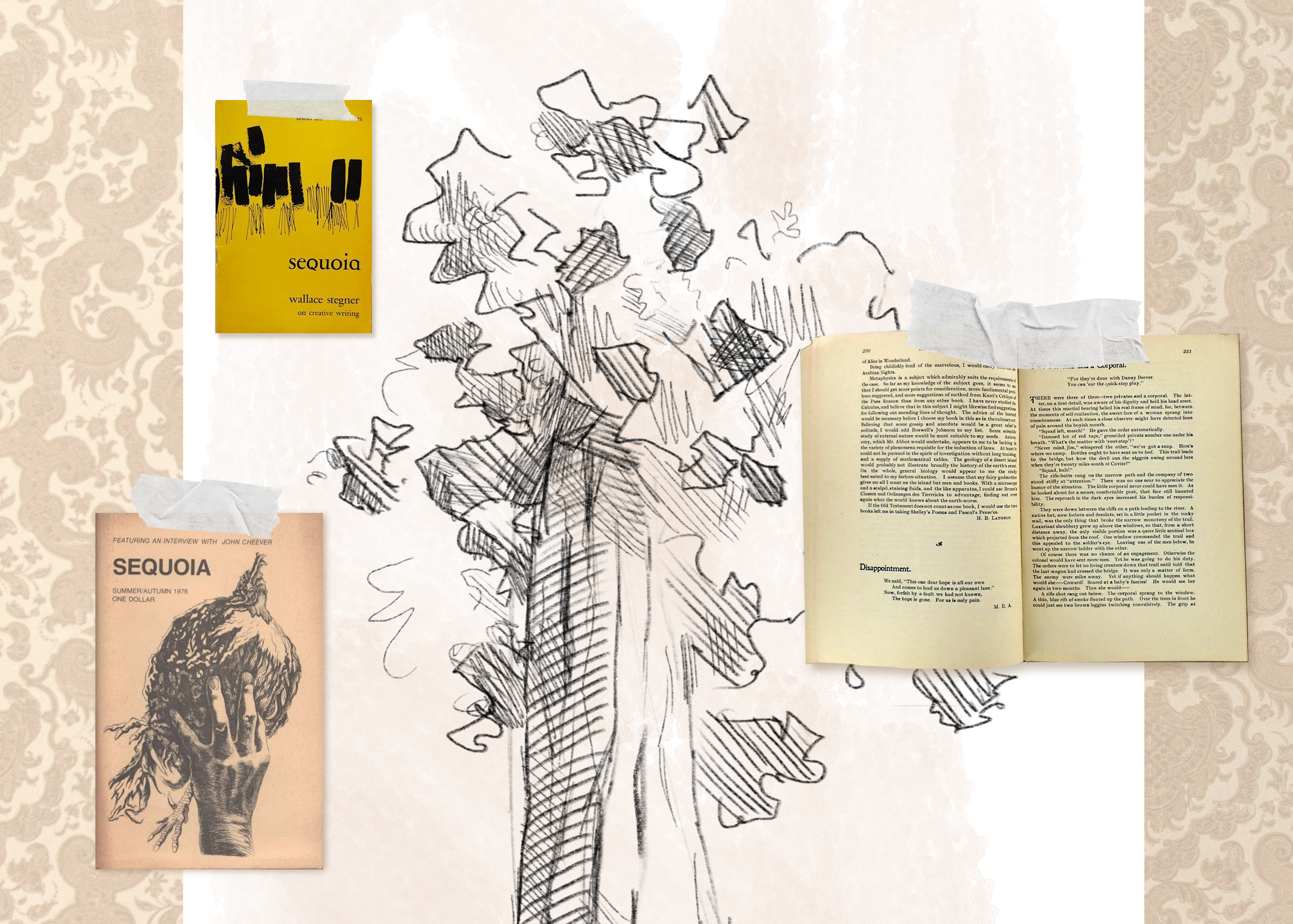Stanford has been known as a cradle for “techies” and the STEM disciplines for decades. Amid this skewed prioritization, how did literature students find and foster a sense of community? By running an internationally known literary magazine.
Sequoia, a student-run literary magazine (also called “lit mag” or “little magazine”), was first founded by Wilfred Stone and Linda Brownrigg in 1956. It published student authors along with semi-known, non-commercial writers around the Bay and the country.
Literary works published in Sequoia include poetry and prose as well as visual art pieces on the cover and interspersed throughout. The digest-sized magazines vary in length from about 30 to 80 pages. The magazine has a professional and undeniably generative look to it. Its works included that of now-renowned authors who were just getting their start, such as Diane Middlebrook, who was making significant changes to her literary identity at the time.
The magazine rose from humble beginnings in the ’50s and was “limping along” — publishing only one issue per year — when English major Dana Gioia ’73 MBA ’77 discovered it. He decided he wanted to make it something bigger.
The ’70s saw a golden age of literary magazines in the United States, according to Gioia. He and his team wanted to place “the work of Stanford writers in the context of broader American literature.”
“A lot of the most interesting developments in American poetry and literature in the ’70s happened in little magazines,” Gioia said. “I decided to bring Sequoia into this.” He went on to become Sequoia’s editor.
In his introduction to Sequoia’s twentieth anniversary edition, Gioia notes the mismatched reality of California having a “rich literary scene,” yet no magazines equal to “the finest Eastern or Southern publications.” Writers often had to “‘go East’ to achieve recognition,” he wrote. It was against this backdrop that Sequoia was reborn.
Revitalizing Sequoia did not happen without a significant amount of time and energy. The challenge of running any lit mag, according to Gioia, was “first to create it, and next to sustain it.” On top of managing the publication, editors had to review and edit hundreds of submissions.
“Given a manuscript without any authority, you have to say whether you like it or not,” Gioia said, underscoring the challenge in the selection process.
Expanding Sequoia’s readership was another challenge. Former Sequoia editor in chief Ted Gioia ’79 MBA ’83 recalled “going door to door in the dorms, trying to convince students to buy a copy of the magazine.” Each copy cost two dollars, a luxury for students back in the ’70s. Two dollars in the ’70s would be worth around 11 dollars today.
“Few things I’ve attempted in life were more challenging than pounding on doors in Stern Hall and Wilbur Hall, trying to sell poems and short stories to the residents,” said Ted Gioia, now a well-known jazz historian.
By the time he and his staff graduated, Sequoia was a “Stanford-based journal of national quality,” according to Dana Gioia. They were publishing a substantial issue every three months, containing works of Stanford writers and a selection of writers from elsewhere.
Larry Rothfield ’78 noted that Sequoia had an international reach. During a trip to Paris in his student years, his group went to the famous bookstore and literary mecca Shakespeare and Company. To his surprise, the store’s owner had heard of the Northern California literary magazine Sequoia.
Both Dana and Ted Gioia acknowledged their growth from working on Sequoia. “I learned as much about management running Sequoia as I did in business school,” said Dana Gioia, who worked in business for 15 years and previously ran the National Endowment for the Arts.
Ted Gioia added that his experience at “Sequoia” was “just as valuable as what I learned in a classroom.” He is now a well-known Substack writer with over 132,000 followers.
A shining moment in Sequoia’s history was its 20th anniversary edition released in the winter of 1976. The special edition was an anthology of best poetry published within the previous twenty years. The anthology not only gave space for established authors like Pulitzer Prize winner N. Scott Momaday, but also aspiring ones like Dana Gioia himself.
Today, publications at Stanford are plentiful. For the most part, however, these publications are not literary. The closest magazine to Sequoia that Stanford boasts today is Leland Quarterly, Stanford’s “premier literary magazine,” which publishes current Stanford students only.
Sequoia alum Larry Rothfield ’78, now associate professor emeritus at the University of Chicago, has high hopes for what a literary magazine can do for students moving forward: It “galvanizes a scene that the undergraduates can get involved in, and that connects them with the world of actual living writers.”
“I think it’s still valuable to have these kinds of magazines, especially if they can get support from the administration to bring speakers in and create a [literary] scene,” Rothfield said.
Dana Gioia hopes that literary magazines at Stanford can continue to give students a space “to meet, to plan, to perform, to publish,” just like Sequoia did for him and his peers.
Dana Gioia encourages current Stanford students to take on the project of reviving Sequoia. He established a fund through Stanford’s Office of Development for students to take on this project.
“Give them a little bit of money and they’ll do the rest,” Dana Gioia said. “Real culture comes from the bottom up, not from the top down.”
